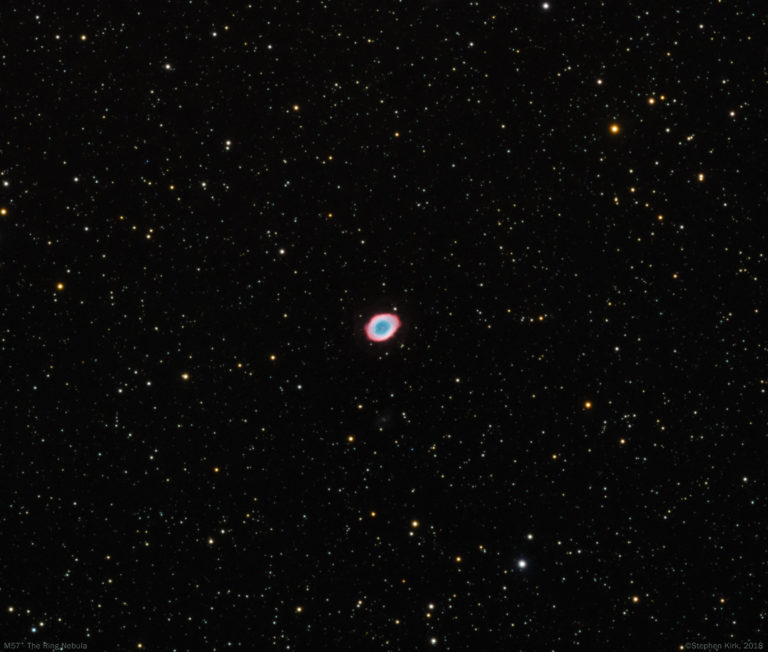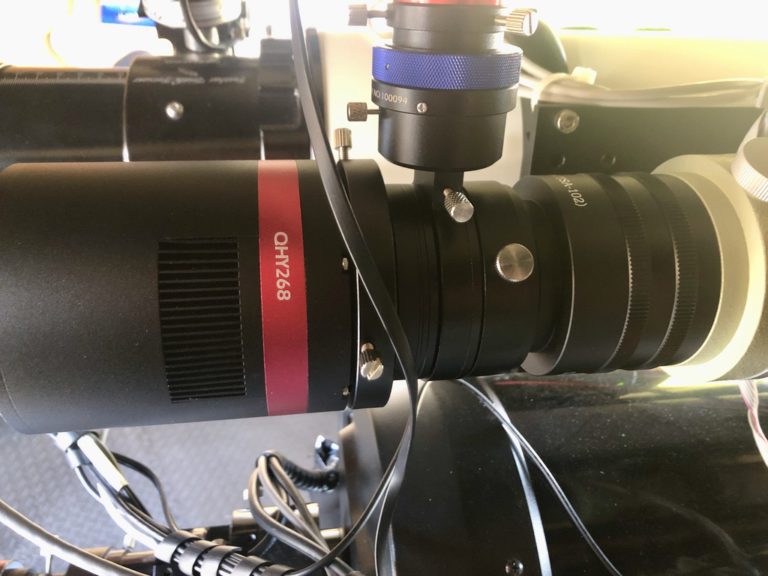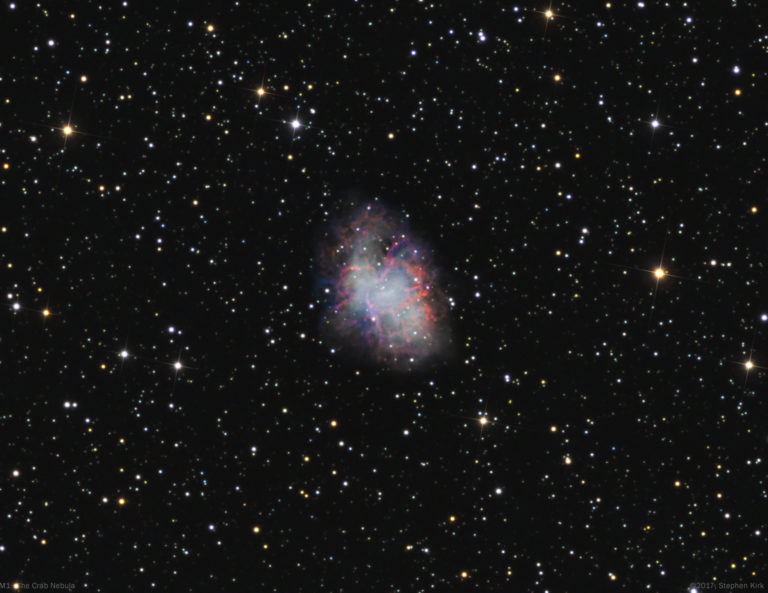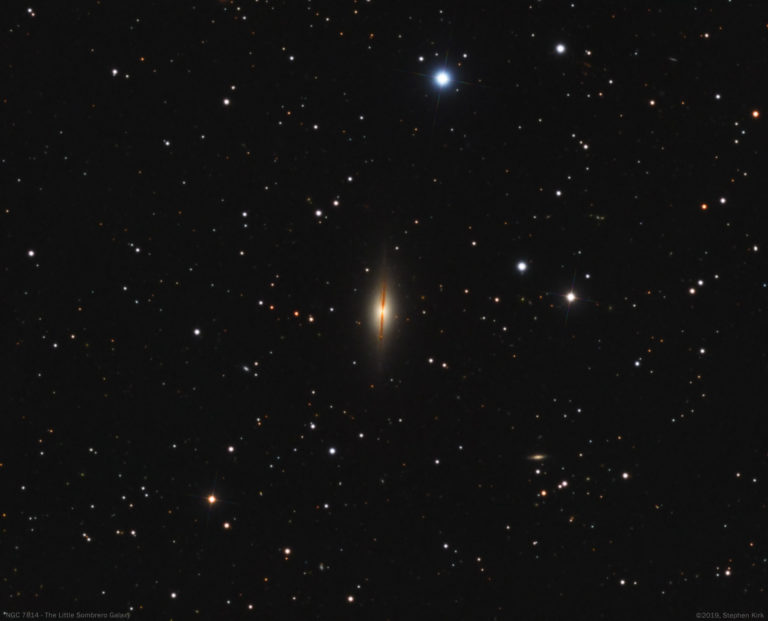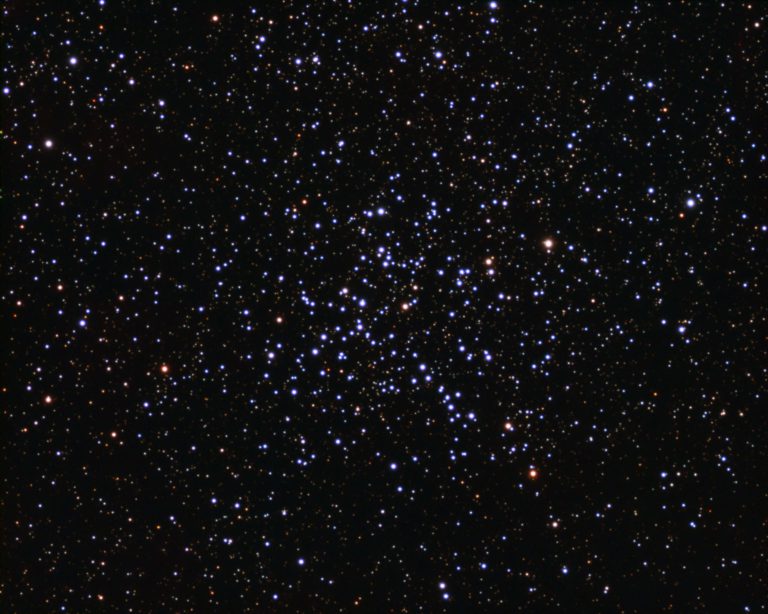A famous planetary nebula in the Northern Hemisphere of the sky in the summer constellation of Lyra. One of four planetary nebulae in the Messier catalog of deep sky objects, the other three being M27, M76 and M97. It is visible in a small telescope as a faint ring. M57 is about 2500 light years away and it is the outer envelope shed off by a dying star, the star itself can be seen right in the middle of the nebula. The Sun will look like this from afar when it does the same in about five billion years from now. More massive stars do not die in this fashion but explode in a cataclysmic event called a supernova; M1 being one such example. In the image below, look for the ghostly outer ring surrounding the main “ring” of the nebula. M57 – The Ring Nebula Image Technical Data Imaged…
Introduction I’ve bought a QHY268C colour CMOS camera and a QHYOAG-M as discussed in my post here. As I explain in that post, my intention is to connect this up to my Takahashi FSQ85 “BabyQ” and make it an extensible system so that with easy and minor changes I can also connect the camera/OAG assembly to my Williams Optics Redcat 51, Samyang 135mm lens and maybe other optical systems (although its primary use will be on the FSQ85). I also explain in that post how to configure the QHY268C and the OAG assembly such that both camera and guide camera can both reach focus simultaneously by “padding” out the camera side of the OAG with about 13mm of spacers between the OAG and the camera in order to get both cameras to simultaneously focus.I now needed to determine a way to mount the OAG-QHY268C assembly via a threaded method to…
The Crab Nebula – M1 – is the expanding remains of a supernova that was seen in 1054 throughput medieval Europe, The Middle East and China. The nebula is very distant at about 6500 light years and lies in the Perseus Arm of our galaxy, further out from The Galaxy’s core than The Sun. It is called The Crab because William Parsons from his Irish observatory who first viewed it in 1840 thought it resembled the outline of a crab and the name has stuck. The object was first observed in the 1731 and was linked to the Supernova of 1054 as recently as 1913. Earlier photographic plates from the 1950’s and those taken today show a definite expansion in the nebula in the intervening 70 years. M1 – The Crab Nebula Image Technical Data Imaged from my backyard in Nottingham, UK in the winter of 2017 with my TEC…
NGC 7814 – The Little Sombrero Galaxy NGC 7814 is an edge-on spiral galaxy 40 million light-years away in the constellation of Pegasus. IT is nicknamed “The Little Sombrero” because of its likeness to The Sombrero Galaxy M104 in Virgo. Close examination of the picture reveals many tiny galaxies, up to a billion light years away in the depths of The Universe.The dust lanes of the edge-on spiral arms can be easily seen. Image Technical Data NGC 7814 is very remote and so needs a long integration (exposure) time. This image was captured from my backyard observatory in Nottingham, UK over the course of three nights in October 2019 (a very wet period in the UK and the capture nights were 2,17 and 24). It took significant dedication to capture the subframes for this image given the dreary weather circumstances and I nearly gave up on several occasions! I used…
M38 is the third of three Messier Open Clusters in the constellation of Auriga, in the Northern hemisphere of the sky. The other two Messier clusters are M36 and M37. All of them are easily visible with binoculars and are seen as faint smudges against the darker background. If you read my post on the Constellation of Auriga you will see all three of the Open Clusters in the same image M38 Open Cluster Image Technical Data Imaged from my back yard in Nottingham, UK on the 18th January 2020 whilst high overhead from my location. I used my TEC 140 refractor with Atik 460 cooled CCD camera and Astrodon RGB E Series Generation 2 filters. I used my MESU 200 mount guided with OAG. All exposures binned 1×1: Red > 12 x 180s ; Green > 14 x 180s ; Blue > 13 x 180s. This gives a total integration…

